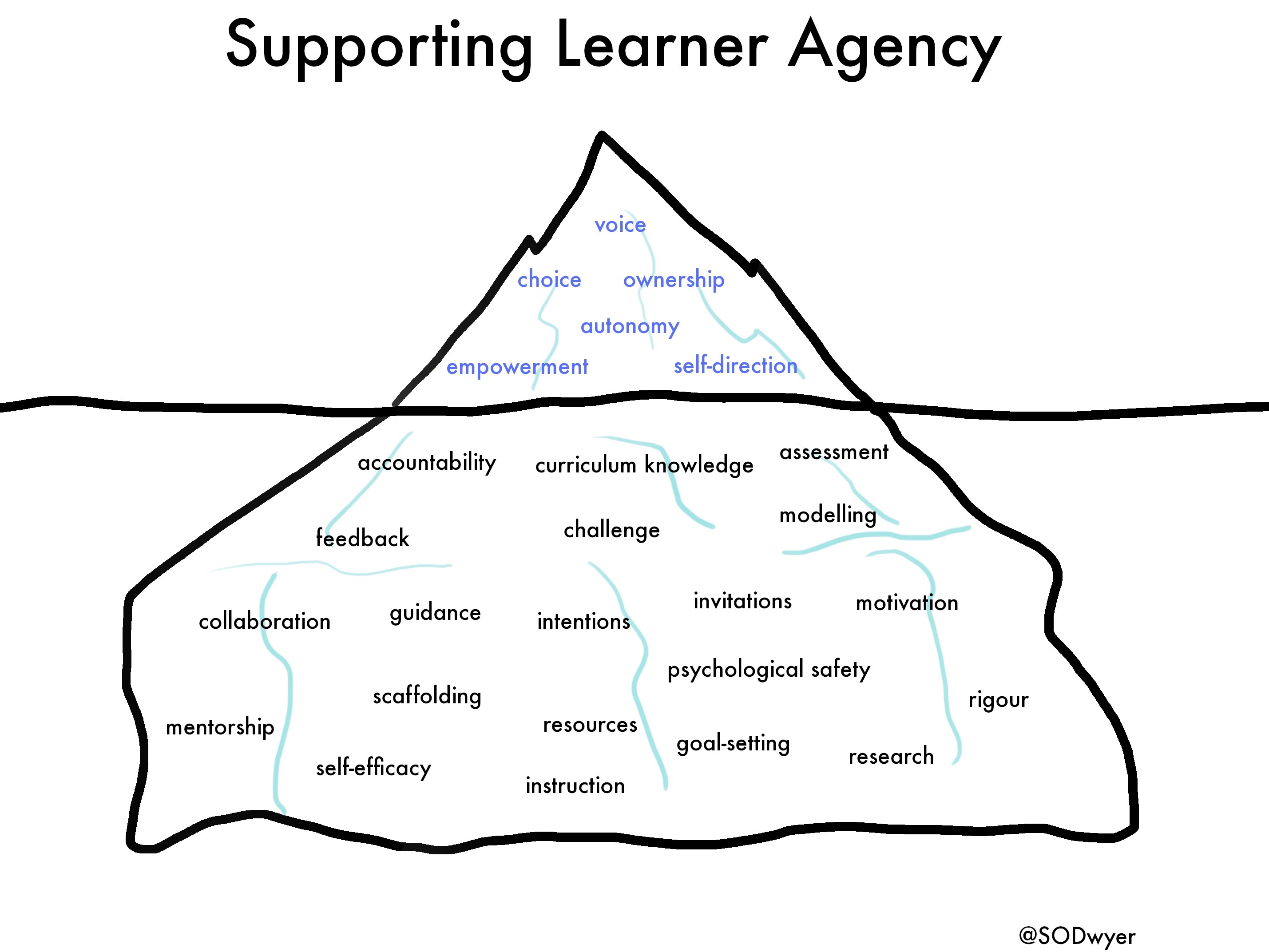Icebergs are useful metaphors for illustrating hidden depth and nuance.
They help us appreciate the complexities of culture, success and a well-told narrative.
Recently, I’ve been imagining learner agency as the tip of its own educational iceberg – that is, the visible evidence of empowered learning – but not the whole picture of what facilitates autonomous, mastery-driven learning.
It’s complex
When my classroom starts buzzing with rich, student-led inquiry, I know that learner agency is high.
I’m also aware that many other things are also going right. Provocations have sparked curiosity, invitations (cognitive and interpersonal) have been accepted, collaboration has been fruitful, and teacher guidance has been “goldilocked” (pitched at a just-right level to keep students striving for understanding).
Honestly, learner agency is not visible all day, every day. And it’s not the children, with strong opinions and giant questions, who lack motivation! I’m the reason that learner agency is not always unleashed. In my well-intentioned lessons, I miss their divergent comments, I offer a provocative question but rush their thinking time, or I give a factual answer when we should really marinate in confusion.
Creating a high agency environment is a complex quest.
False Dichotomies
But complexity is good.
Creating truly empowering classrooms should be challenging and even elusive at times.
It’s complexity that protects us from the trap of false dichotomies.
For example:
- Student choice OR teacher direction?
Both. It’s often a negotiation between an empowered learner and an invested teacher that creates a partnership supportive of agency.
- Student voice OR teacher voice?
Both. It’s a constant, robust dialogue; a mix of questioning, explaining, critiquing, affirming, interjecting and listening that steadily helps learners to advocate for their needs and articulate emerging theories.
- Student-owned learning OR teacher-owned learning?
Both. It’s a mess of collaboratively constructed understandings, during which nobody remembers (or cares) who led whom to deeper, richer realisations about the world.
These dichotomies often spark debate among media commentators. However, they are of little consequence to educators, working with children who need responsive, personalised guidance.
And they are never present in the documentation provided by the IB.
(See The Learner, from Principles into Practice. The language of “moving away from/moving towards” supports teacher agency in making complex pedagogical choices.)
So…what supports learner agency?
Underpinning high agency environments is a host of not very new, not very innovative – but very important – educational practices.
Here a few:
curriculum knowledge– Agency occurs when teachers know the curriculum so well, they can say “yes” to student-led inquiries because they are confident in making curricular connections and guiding conceptual learning.
assessment – Teachers who continually collect and analyse information about what students know and how they learn, are well-equipped to provide just-right, just-in-time guidance to sustain student-led inquiry.
psychological safety – Students advocate for their own learning when they trust that their mistakes are valued and respected by their peers and teachers.
feedback (and feedforward) – Students exercise agency when they know the next steps to take on their journey of personal growth.
learning intentions – Students take charge of learning experiences when they know what they’re learning about, and more importantly, why it matters.
challenge – Only when students are challenged beyond current levels of understanding, do they experience the frustration and dissonance needed to ask questions, test theories and start investigations of their own.
And many more! This image is just an attempt to capture the complexity of supporting learner agency.
When we witness learner agency, it is truly thrilling. Students are alive with purpose, passion and confidence. We should remember that many unseen, but important, educational practices create the conditions for autonomous learning.
Beneath the iceberg, lies powerful pedagogy.
Credit to those who help me think about icebergs (Ettie Zilber), dichotomies (Katherine Hoekman), and unleashing learning (Edna Sackson). Credit to Chris Wyatt for facilitating learner agency, supporting teacher agency, and embracing complexity in all things.



